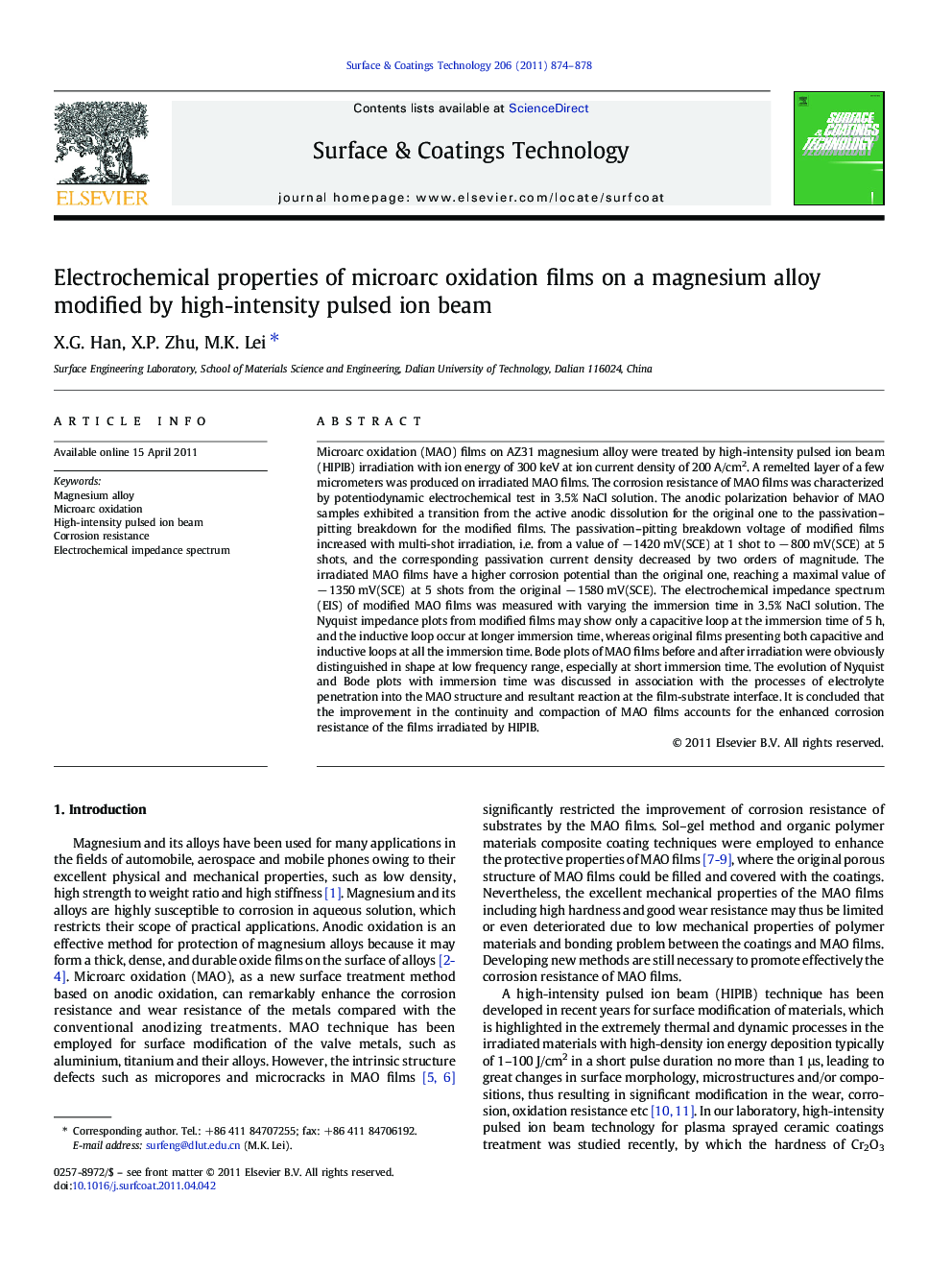| کد مقاله | کد نشریه | سال انتشار | مقاله انگلیسی | نسخه تمام متن |
|---|---|---|---|---|
| 1658872 | 1008362 | 2011 | 5 صفحه PDF | دانلود رایگان |

Microarc oxidation (MAO) films on AZ31 magnesium alloy were treated by high-intensity pulsed ion beam (HIPIB) irradiation with ion energy of 300 keV at ion current density of 200 A/cm2. A remelted layer of a few micrometers was produced on irradiated MAO films. The corrosion resistance of MAO films was characterized by potentiodynamic electrochemical test in 3.5% NaCl solution. The anodic polarization behavior of MAO samples exhibited a transition from the active anodic dissolution for the original one to the passivation–pitting breakdown for the modified films. The passivation–pitting breakdown voltage of modified films increased with multi-shot irradiation, i.e. from a value of − 1420 mV(SCE) at 1 shot to − 800 mV(SCE) at 5 shots, and the corresponding passivation current density decreased by two orders of magnitude. The irradiated MAO films have a higher corrosion potential than the original one, reaching a maximal value of − 1350 mV(SCE) at 5 shots from the original − 1580 mV(SCE). The electrochemical impedance spectrum (EIS) of modified MAO films was measured with varying the immersion time in 3.5% NaCl solution. The Nyquist impedance plots from modified films may show only a capacitive loop at the immersion time of 5 h, and the inductive loop occur at longer immersion time, whereas original films presenting both capacitive and inductive loops at all the immersion time. Bode plots of MAO films before and after irradiation were obviously distinguished in shape at low frequency range, especially at short immersion time. The evolution of Nyquist and Bode plots with immersion time was discussed in association with the processes of electrolyte penetration into the MAO structure and resultant reaction at the film-substrate interface. It is concluded that the improvement in the continuity and compaction of MAO films accounts for the enhanced corrosion resistance of the films irradiated by HIPIB.
Research highlights
► Microarc oxidation films were modified by high-intensity pulsed ion beam irradiation.
► A remelted layer of a few micrometers was produced on the irradiated MAO films.
► The anodic polarization behavior of modified films was passivation-pitting breakdown.
► The EIS plots for modified films show only a capacitive loop at 5 h immersion time.
► Enhanced corrosion resistance is due to improved film continuity and compaction.
Journal: Surface and Coatings Technology - Volume 206, Issue 5, 25 November 2011, Pages 874–878